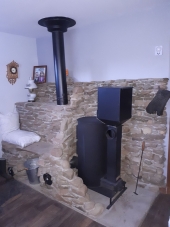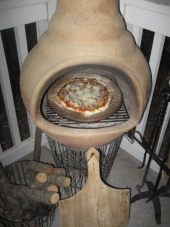I have one thought re Paul Wheaton’s recent email mention of “It seems so bizarre to me that interest in rocket mass heaters is not a thousand times more than it is.”
I can tell you why based on my real estate investment experience and as a designer and owner builder of a passive solar home (and why I was perplexed for decades why everyone didn’t and still do not build all homes with passive solar energy efficient design), as well as the fact that we are building an ecovillage that cannot have RMH systems in the homes…
The main reasons why are because:
1) It is labour intensive (hard work) for most people who already work full time for a living
2) Most people do not know how or want to make one (lack skill set, no time or desire to learn or build)—Permies folks are the exception, not the rule for the majority of society for large/complex DIY projects
3) Home insurance will not cover RMHs (they could literally be denied necessary/required coverage by installing a RMH)
4) There’s no standardized designs (the information online is overwhelming and you have to dig to find it all) and gets worse due to differences between specific heaters types
5) The barrel is ugly and may not meet code requirements for heating stoves (need an alternative that can be purchased)
6) Certified masons are not in the know for how to build it for people
7) There's no certified brand of rocket stove, except the Liberator, which really only uses pellets efficiently (people may not want to buy pellets indefinitely) and it’s very touchy to add a bench to it—without the thermal mass it is not a true Rocket Mass Heater.
To my knowledge…
Nobody has put together a RMH system(s) that includes a certified stove that uses sticks/wood and that ANY certified mason can build and put together for them, and that can pass insurance inspections, which can also be mass produced.
Once these issues have been solved these things should happen:
- the equipment is manufactured and sold by a company (cooperative or business)
- equipment eventually carried by outside companies (that sell furnaces, wood stoves, etc.)
- replacement parts carried by hardware stores, or similar shops
- public majority educated about RMHs and how they work, and why they’re superior
- Codes are accepting of these systems (work on this first, starting with the most stringent codes rules)
- Insurance acceptance of these systems (reach out to insurance companies towards education and acceptance)
- that these are backup heating systems but could be primary (with electric or similar backup for automation or vacation duration)
- that they can use multiple types of fuel (maybe interchangeably)… wood, coppice branches, pellets, whatever else
- they can be used to cook (built in stovetop and oven)
- they can heat water (should also be tied into their water heater for pre-heating, primary, and/or backup)
- their placement in the home should ideally be central
- homes should include an earth tube for feeding tempered air supply for the fire
- financing should be available
- cost should be competitive
- It should be called a sub-type of a masonry stove heater so it passes codes, perhaps using a different name than the homemade 55-gal drum versions (to differentiate them)
- J-tube, L-tube or batch box versions and different sizes, etc., could potentially be available
A think tank of permaculturists who are regenepreneurs (regenerative entrepreneurs) and other business people should get together and create a company collective to design, crowdsource fund, make, market and sell these kits to anyone who can hire a professional builder or mason to build it.
Then the world will start changing, one RMH at a time.
I have been thinking about this a lot because we are planning on building an ecovillage here in Nova Scotia soon and had planned on buying a certified rocket stove (Liberator) and adding a wood stove as the bell so it could pass codes, and get a certified mason to build the bench, but pellets are not ideal for people ages 50+ because they cannot always lift heavy bags or deal with that… so that idea to get these systems to a place where they are insurable for the entire village stopped dead in its tracks.
I don’t have time or ability to head such a business endeavour to produce engineer-stamped (required in Canada) RMH kits in mass production, plus deal with an extensive marketing and educational campaign, so this job cannot be done by me. We have enough on our plate.
But I would love to see great minds put something like this together. Above is the information needed to *begin* working on a worthy business plan.






